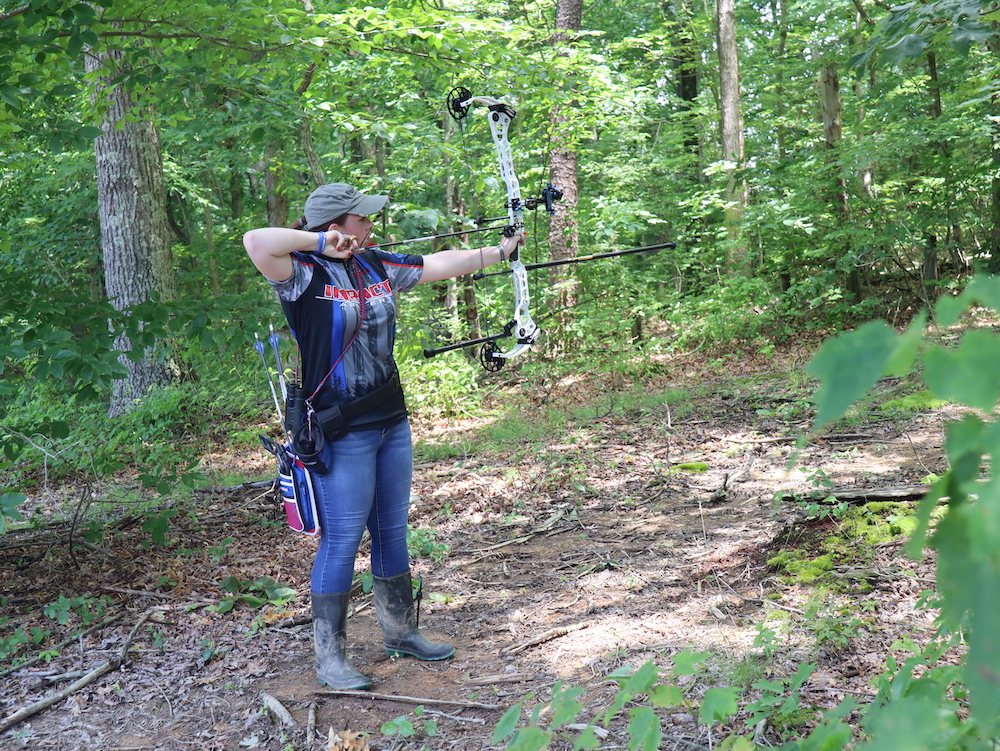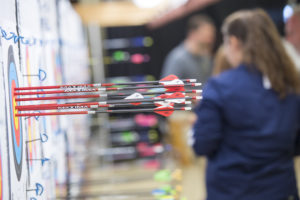The number of mechanical release aids available on the market can be overwhelming, with prices ranging from $50 to $350 and materials ranging from plastic to brass. Releases also vary in how you hold them and how you activate the release to shoot the arrow. This article will try to summarize the different releases and help you decide which one is right for you.
Index Finger/Wrist Strap
The wrist strap release aid is one that is activated with the archer’s index finger, much like the trigger on a firearm. A strap loops around the wrist of the archer’s drawing hand and a set of mechanical jaws hook onto the string, or a mechanical hook hooks into the D-loop. This style allows the archer to hold full draw for a fairly long time without finger fatigue because of the release being connected to the archer’s wrist; this is desirable for hunters who might have to wait for their target to come into range, or to turn just right for an accurate shot to the vital organs. Activation of the wrist strap release is done by slowly squeezing the trigger with the index finger.
Handheld Trigger/Thumb Button

A thumb button release aid is held in the archer’s string hand with either three or four fingers (depending on the model) and is activated by the thumb pressing on a trigger button that opens the release jaws. This release aid is more widely used by target archers, but some hunters prefer them, too, because they can activate the release on command when their prey is in position. Unlike the wrist strap release, a handheld release aid allows the archer to get more contact between the back of their string hand and the face at the jawline, which allows for a more consistent anchor and more consistent results on the target.
Resistance Activated
A resistance release is a handheld release that does not have an external trigger that is activated by a finger. Instead, it uses an internal mechanism that resists the tension of the bowstring until a certain point. Using this release is quite simple: You hook the release to the D-loop, draw the bowstring back, disengage the safety lock, and pull into the wall of the cams until the release lets go of the bowstring. This reinforces back tension with the archer because the only way to activate the resistance release is by pulling with your back muscles. A static hold at full draw will not activate the release. The resistance release is also a great tool for coaches to use to teach archers about true back tension in their transition to the next, and final, release on this list.
Back Tension/Hinge

Another handheld device, the back tension release aid is more widely used by top target archers because of its consistency and simplicity. It works with the rotation of the archer’s string hand, which causes the release hook to let go of the bowstring, almost by surprise. To use this type, the archer holds the release in a “locked” position by wrapping their thumb around the thumb post to keep the release rotated in a safe position as they draw back the bowstring. Once at full draw, they remove their thumb from the thumb post and transfer the pressure from their index finger to their middle and ring fingers while maintaining back tension and pulling into the cam wall. By keeping this pressure consistent while allowing the release to rotate toward their ring finger, the archer activates the release by surprise and thus does not anticipate the shot. Anticipating the shot could lead to inconsistencies. Most compound archers on World Cup and World Championship podiums shoot a variation of the back tension release.
Choosing your release aid ultimately comes down to personal preference. Going into your local pro shop and being able to try each of them will lead you to the one that fits you the best. If you have any issues with your fingers, you might want to use a wrist strap release. If you like the feel of a handheld release, then a thumb button or back tension release could be the way to go. One thing is for certain; considering the number of release aids on the market, you’ll never run out of choices.



